25 Things to know before your first 25 mile LD ride
| June 26, 2015 | Posted by Melinda under Equine Endurance, Most Popular |
Heading off to your first LD of 25 miles or more? Feeling a bit nervous? Relax! Here’s 25 of the essential must-knows before (and after) pulling into ridecamp.
Oct 2019 update: This post is now included in my book “Go Ride Far.” I’m leaving this post up on the blog in its entirety, but please consider supporting the costs of running this site by buying “Go Ride Far.” 🙂
1. Know where ride camp is.
Ridecamps are often in the middle of nowhere without addresses or readily GPS’ed cross streets. Sometimes you are given GPS coordinates, or step by step directions…YEAH. And sometimes you aren’t. Sometimes you aren’t even warned there are TWO streets of the same name and the SECOND one is your turnoff and you *could* result in having to backtrack through a residential section by backing your truck and trailer a quarter mile before being able to turn around. (True story). Best is to have at least 2 methods of navigation to ridecamp – written step by step directions and/or GPS and/or area map etc.

2. Know and understand the AERC rules.
It’s tricky. Gate-and-goes versus gate-into-holds, who has to weigh with tack, and finish criteria guidelines. The specifics will be discussed at the ride, but you should be very familiar with the AERC handbook before coming to ridecamp.

3. Read the ride flyer completely.
This will prevent all sorts of misunderstandings from whether you should leave your dog at home, to what kinds of containment systems are allowed for your horse.

4. If required, find and purchase weed-free hay.
How do you know whether you need it? See #3.
5. Be prepared to pay camping fees if any at the ride site.
6. Take each moment as it comes and try to let go of preconceived notions.
I can’t emphasize this enough. You have probably been day dreaming about this moment for months. More likely then not there is some sort of image or expectation of how the event will go, maybe it’s what your camp will look like, or how the ride will be organized, or how your fellow riders will act and behave. Here’s the reality. You’ve been in love with an idea. Now is time to experience the reality – the good, the wonderful, the transformative….and well the bad and ugly too. For your first ride go into the event with as blank a slate as possible. You’ve been told the ride is well-organized, cool, minimal hills, and a reputation for being short. That year it’s record high temps, the trail is actually a bit long, and you happen to be surrounded by a group of cranky riders, and the ride manager seems a bit frazzled and distracted everytime you see her. It happens. Even today, with over a thousand miles under my belt, when I go to a ride I’ve never been before I’m doing so with an open mind to see how this particular ride does things. I’d rather be pleasantly suprised then bitterly dissapointed. Each ride tends to have their own unique flavor and that’s OK!

7. Bring more horse food then you think you will need.
My horses eat double the amount of hay during a ride then they do at home!

8. There will be a ride meeting.
Sit up front if you want to hear what is being said (and you do). People in the back tend to whisper and talk. Rude? probably. But instead of spending your time annoyed and frusterated and shushing everyone….plan on sitting up front. Don’t worry when the ride manager inevitably starts rattling off random trail information and you go “huh”? because you don’t know that water trough where the figure 8 loop happened last year that they are changing this year….just go with the flow. Ribbon colors, how the trail and turns are marked, where and how long are the holds, is tack on or off for vet checks, what is the pulse criteria and time criteria for holds and finish, are there any unique things about the ride – such as needing to pick up tokens at certain parts of the trail to prove you travelled the distance. Where are crewbags being sent and is there any special requirements (send hay, DON’T send hay, bring your own rider food etc.). That covers most of the important information.

9. Pre-plan the crew bag.
There’s never as much time as you think in the evening after settling in, eating dinner, going to the ride meeting, and tying up loose ends. Make your life a little less hectic by either prepacking most of your crew bag, or having a comprehensive list.

10. Have a reliable way to get up in the morning.
I’ve almost missed 3 ride starts because my alarm was unreliable. My phone doesn’t always work (even the alarm) when there’s no reception, my watch that I *always* wake up to at home doesn’t even nudge my unconsiousness, the friend that was suppose to wake me up oversleeps……Find something reliable and then have a back too!

11. Resolve to have fun.
Enjoyment and happiness is a choice. Being committed to #6 will help. Find a way to make that first ride fun, even if it pours, you get pulled at the first check, wait 3 hours to get trailered out, and then get stuck in the mud. Or get forgot about on the trail as you are woefully overtime, run out of water, puke on the side of the trail from heat and exhaustion, only to come into the check that is packing up to find that all the human water is gone. Even in those circumstances there can be a sliver of fun – the trail was beautiful, the bond between you and the horse is stronger, the beer afterwards tasted REALLY good, you know the 14 things you need to change between now and your next ride.
12. Watcha going to do with your ride card?
Stick it in a ziplock and stuff it in a saddle bag? Keep it in your bra? A pocket? A neck thingy?
13. Memorize your rider number.
Ideally before you have to go up to the number taker at the beginning of the ride and call it out. Early morning gymnastics in the saddle as you twist and turn to try and read the smeared grease on the horse’s butt is less then desirable.
14. Expect your horse to be more naughty then it’s ever been on a conditioning ride.
“But he always….!”, “But I never have to….”. Yeah, but if a ride was the same as conditioning you would save a lot of time and money by just riding at home. (remember #6?) A ride is different from conditioning. Expect your horse to suprise you (pleasantly and ummm…not so pleasantly). It’s part of the excitement and pleasure of doing a real endurance ride! Being prepared (gloves, a plan) will help a LOT.
15. Have a plan for the start….BEFORE the morning of the ride.
Are you going to start at the back? In the middle? With a buddy? Pro tip: Don’t expect to use another person’s horse as a “brake”. You slam into the back of my horse because you can’t control yours and we are NOT friends.
16. Bring a well prepared, in addition to a well conditioned mount.
Be able to handle the most typical trail obstacles that you will probably encounter. Water, single track, gates, cows. Sure, your horse that crosses water at home might turn into a completely different beast (see #6) and refuse to cross water at the ride….but don’t bring a horse to a ride, especially one with a known water crossing, that doesn’t cross water and expect the riders around you to get your horse to cross. Being ready for an endurance ride is more then just covering time and distance – it is about being able to handle the other rigors of the trail as well.
17. Have a plan but don’t expect everything to go to plan…
and decide how you are going to handle unexpected and last minute changes.
18. Bring a change of clothes for the half way point “just in case”.
19. Have a solution for unexpected horse footwear malfunctions.
Will there be a farrier? Could you tack on a spare shoe if needed? Are you going to carry a boot? Does it fit?
20. Don’t yell or become short tempered with the ride vets, manager, or volunteers.
For that matter, extend the same courtesy to your fellow riders. Make that commitment now. If you tend to be a volatile person, pre-plan your reactions NOW. Endurance is an incredibly small community and your reputation starts at your very first endurance ride. Just. Don’t. Do. It.
21. Bring a variety of food for you!
I’m a person that loves food and eats plenty of it. Other events such as long distance running are ALL ABOUT THE EATING. But when it comes to endurance rides I have a really tough time eating. Nothing sounds good, a wrong choice leaves me gagging and dry heaving, and I’d prefer to skip the whole eating thing all together. I pack lots of different stuff in small quantities – the round and rectangle “lunch box sized” ziplock containers work well – and have LOTS of different options in front of me to sample at ride camp and at vet checks. I’m not a huge junk food eater, but at rides the most delicious addicting junk foods (as well as my favorite non-junk foods) go in the food box. Things that if I ate at home are so addicting I cannot stop eating until they are gone. THAT is the kind of food I pack. Ham and cheese sandwiches, peanut butter M&Ms, Smart Food white cheddar popcorn, Gaslight kettle corn, animal crackers, a certain brand of pork skins, mac and cheese with tuna, Hershey almond and chocolate drops, Stoats bars, pizza, rice pudding, fresh fruit etc. I really like freeze-dried backpacking meals, and so packing a couple of those for dinner time helps me get down enough calories in addition to the snacks.
22. Bring at least some human food that doesn’t require cooking
…even if you are planning on bringing a camp stove or similar. Because this one time…despite all my efforts my camp stove would NOT work. And I looked around in dismay at all the food I brought and realized that everything I had either needed to be heated or have hot water added to it to make it edible. Ugh. Don’t be stuck eating crunchy cold mac and cheese and tuna like me!
23. Bring cash for ride photos.
Some photographers will have proofs available online some time after the ride. Other photographers will have images available at the end of the ride, already printed out. Since I never know in advance who is going to be photographing the ride, I take a $20 for photos, just in case.
24. Have an idea of what resourses and actions you would be willing to do if your horse needs treatment at a ride.
Of all the AERC official distance, statistics show you are the least likely to be pulled and/or require treatment after an LD. However, strange things happen and riding endurance at any distance is not without risk. If you make the decision to expose your horse to a greater risk and illness and injury and ride in competitions, you owe it to your mount to be able to do some basic care if needed. Thinking about basic guidelines right now will help you and the vet make decisions more efficiently if needed – what is your budget? Will you trailer out to the referral hospital or treat on site only? Is colic surgery an option? (don’t worry – vets don’t expect that everyone is able to do surgery!)
25. Bring something to clean up and take home manure.
Not all rides will require this, and not all rides that require this will make it clear on the ride flyer. Best to be prepared just in case. I find that heavy duty trash bags and a manure fork is the best method and doesn’t take up a lot of space in case I don’t end up using them.





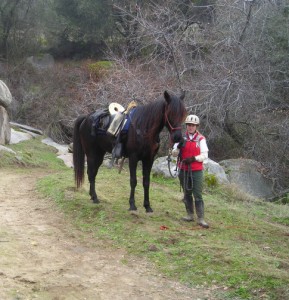

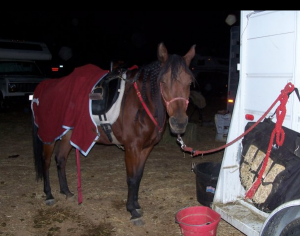
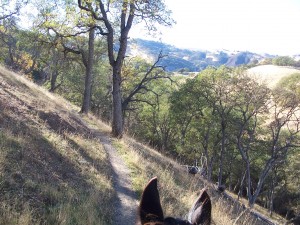
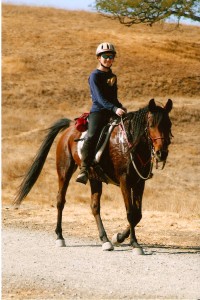

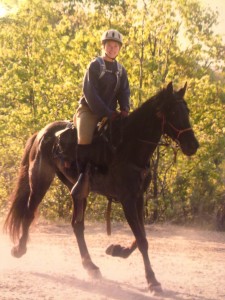

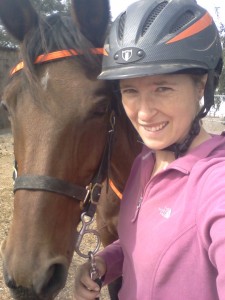
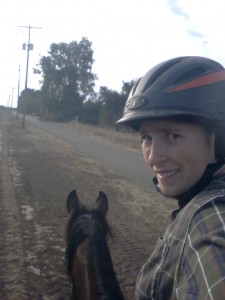
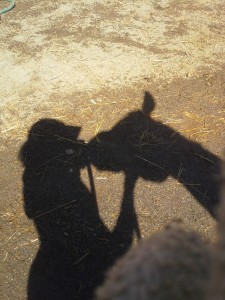
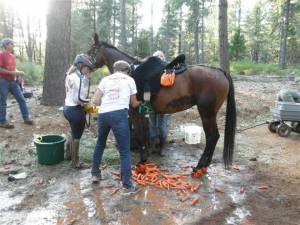
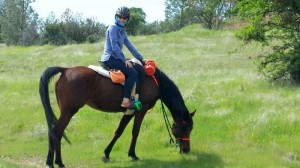
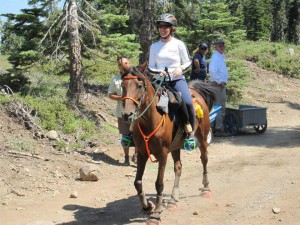
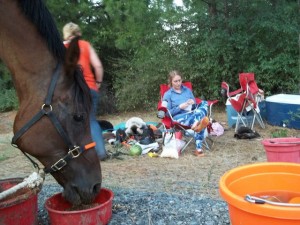



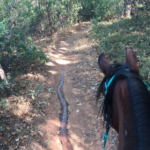







[…] 25 Things to know before your first 25 mile LD ride – June 26, 2015 The running, riding, writing veterinarian Blog created by Melinda Faubel Newton, certified AERC control judge. […]
This was a great read! can I post it to our club website?
Louise, getting ready for the BIG HORN 100!
Firedance Farms
Absolutely!!!!! Can post in full or part, but I would appreciate a link back either way 🙂
I really enjoyed reading this! Very good advice!
Louise, heading for the Big Horn next week!
Firedance Farms Arabians
this was perfect for forwarding to a young rider who is planning her first LD this fall- thanks!
And- in reference to your Wild West ride report…..You did a stellar job of making lemonade from your
lemons. Kudos for the grace you showed, and shared.
Love this list. And #14. #14. #14!! That is what made me almost give up during my first ride. We worked it out. He’s still too fast for me, but we’re working on it…
Excellent post for us new kids 🙂
Thank you!
Don’t forget a packing list! That, as well as directions to the ride are “MUST HAVES” for me – the one ride I didn’t check the list before I left the barn I had to borrow feed from one of my friends.
Loved the mix of horses in the article. I remember a couple of those rides.
It will be interesting to see what the next 25 pictures are because I literally just picked the first 25 for this post that we’re ride related that I found
And – if you can, find an experienced endurance rider with whom you can learn from and pace yourself. My recent very first 25 – I met an incredible lady who happened to be rehabilitating one of her endurance Arabians. She did Tevis 3X and countless other endurance rides (logged over 6K endurance miles). She told me to go ahead of her, and I said, I was fine behind her (she was going exactly the pace I needed to go for both my horse and myself). Okay, I came in 18/25 — but that didn’t matter, I finished! Plus, she gave me valuable pointers all along the way. THANK YOU LUANNE!!!
It’s great how you meet people at rides that make all the difference in the world. I call them my little trail Angels :). I finished my first 100 in good shape because for the last dark loop I tucked myself in between Dave Rabe and let him pace my horse into the finish. It was the ride of a life time 🙂